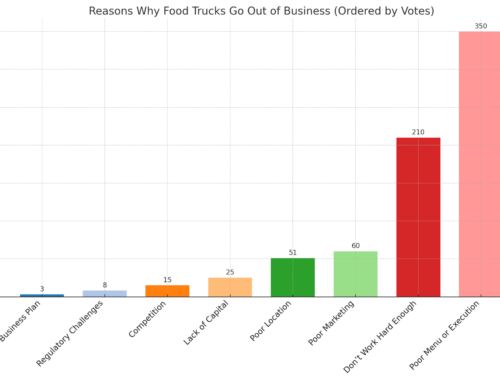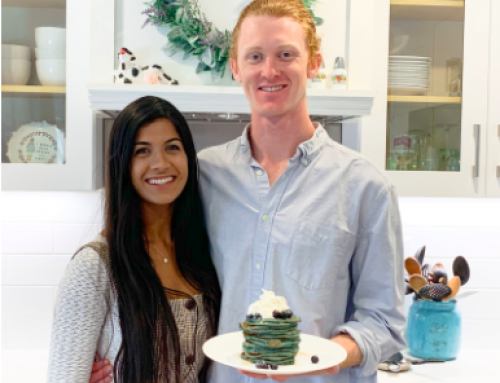Hello! Who are you and what food business did you start?
My name is Joe Walls. I’m just a normal person looking to improve the lives of people with diabetes. I started No Spike to help my family not spike their blood glucose levels, which helps all of those with diabetes. The initial flavor is a chocolate peanut butter shake that is high in protein and low in net carbs.
I’ll be launching many products that are high in flavor and low in sugars while providing protein that assists diabetics with an on-the-go solution. I’ve pre-sold $10K worth of shakes and am moving to production this quarter.

No Spike Protein Shake
What are your pre-order numbers right now?
$10K of products were sold on Kickstarter. We will hit $10M in sales in less than 5 years. DTC is the main focus with an Amazon focus in the first 2-3 years.
How did you come up with the idea for No Spike?
My family has diabetes. I learned how intensely diabetes impacts their lives on a daily basis. Once I learned more about this level of impact, I analyzed the market to learn that most products were either watery, chalky, or high in sugar.
Finding out this gap in the market, I decided to engage a formulator to assist in developing a product that is tasty, high in protein, and low in net carbs. We formulated it and it tastes fantastic!

Protein shake designs.
My background is working with startups and general problem solving. At first, I worked with 75+ startups in North Carolina before obtaining my MBA. After school, I was an M&A advisor for a few years where I led integration efforts of multi-billion dollar companies. I then transitioned to a consumer goods company, where I was the CFO. Through this period, I developed high impact project management skills that enabled me to launch a product that is now selling at $1-1.5M per month on Amazon alone.
After seeing this success, I decided to leave the company to develop my own consumer brand and products. Once I didn’t succeed greatly at the first few tries, I learned about this opportunity and studied the market at a deeper level than I previously performed.
In my personal conversations and learning from the FB advertising efforts, I have seen that this is a completely underserved market. They desire innovative products that simply taste great and have minimal impact on blood glucose levels.
Take us through the process of developing your specialty shake.
I needed to start out with the formulation process. If I couldn’t taste something that was great, why would I want to drink it?! Alternatively, manufacturers aren’t readily available for small runs and they would require very high minimum order quantities.

A formula update from Joe Walls on KickStarter.
Pairing a ready manufacturer with a great formulator allowed me to launch a low risk product that I could easily pivot, if needed. We’re talking about a $500K investment versus a $35K investment.
Once you create the formula, then you have to ensure the ingredient costs are sustainable. On the first run, you can get away with paying extra but a plan is required to become a profitable product that can reinvest in growth. Knowing the long term ingredient costs comes from a simple question to suppliers.
Developing the product’s look and feel (re: can design and packaging) was rather straightforward. “No Spike” was clearly focused on not spiking blood glucose levels and the label looks delicious.
Related Reading: How Fat Leaf Water Raised $30k+ for a Cactus Water Sports Beverage
I used an old friend and gave a of specific direction on the packaging. The rendering project may have cost $750 but I asked for quite a few versions. I then tested the engagement on Facebook to land on the final design.
I’ve decided to spend very minimal amounts on legal costs until taking in outside investment. No need to spend if it isn’t required. Insurance is the only necessary spend that I considered business admin, as I knew the ins and outs to basic business formation and accounting. From there, it comes down to execution.
Describe the process of launching the business.
The website and launch were very straightforward with a trusted resource. I created a rendering of the product to help people conceptualize the finished good. By using those renderings, I was able to launch on Kickstarter and FB to attract customers. I knew I hit a gold mine when I heard the overwhelmingly positive responses.

Sugar is the enemy.
The biggest lesson learned for me was that a formulator and an ingredient supplier is not always aligned. With some ingredients, you can substitute suppliers very easily. With others, you have to see what product is available, the MOQ’s, and the supplier’s ability to work at a small scale. If an ingredient isn’t readily available, your timelines and costs can add up. I expected to launch in August but with suppliers and COVID, I’m going to be happy with a Q1 launch.
Since launch, what has worked to attract and retain customers?
At this point, it is uncertain. I’m pre-launch. I know that the economics of the products work after a very short period of time, as I’ve been in the business of selling DTC for a while.
My focus will be on Amazon only for the first couple years, as there is a quick growth curve that will enable future salespeople to sell to mass market retailers. Until seeing success in this product, it is tough for me to get ahead of myself. That is the fun, though. Figure it out as you go.
How are you doing today and what does the future look like?
The product will be profitable at launch on a per unit basis. However, that doesn’t factor in the ad spend required to drive the product reviews and rankings. This investment should pay off in time but will require diligent analysis on a week-to-week basis.
Overhead for this is extremely lean. Because I know the basics of developing a product and launching on Amazon, I don’t see a need to add headcount until the product is doing $2-5M annually.
Through starting the No Spike, what have you learned?
I look at everything as a project and this is no different. Every product I’ve touched requires a very nuanced approach to ensuring success. COVID may have delayed timelines but it also gave me more time to assess suppliers, learn how Amazon is able to deal with COVID, and it provided me more time to perfect the formula on the first run.
The most important skills are to project manage and run a full process when obtaining quotes. If you have only one supplier or manufacturer, you won’t get the best price or service. Managing those many relationships requires strong organization, which I refer to in this scenario as project management.
What tools do you use for your business?
Excel and flagging emails. These are two essential tools that allow me to stay ahead of the game and maintain control of all the activities that are going on.
QuickBooks for accounting, as it is easy and better than most ERP systems no matter what CPA’s think. Simple is better in my world and maximizing the value of the basics is essential to my success.
What are you learning about right now?
The school of hard knocks is what gave me my best learnings. Currently, I jump on various YouTube videos when diving into the nuances of FB ads, WeChat, or even general learnings about Amazon. Again, keeping the conversation simple is hard but required.
Advice for other food entrepreneurs who want to get started or are just starting out?
Start out with basic market research. “Market research” has been way too difficult in the past but we now know market prices, market volume, and COGS with a little bit of research.
Before you launch a product, determine if the economics will work. Helium10 is great to learn about volume, Amazon searches give you price analysis, and working with suppliers gives a good look at COGS. I know that there are more things to address but the core of the analysis is volume, margin, and competition.
Where can we go to learn more?
- https://www.kickstarter.com/projects/nospike/chocolate-peanut-butter-beverage
- https://www.nospike.co/
Hey! If you enjoyed this interview don’t forget to sign up for our private food business community. You’ll get weekly lessons just like this one when you join and be part of our 40,000+ strong community.




